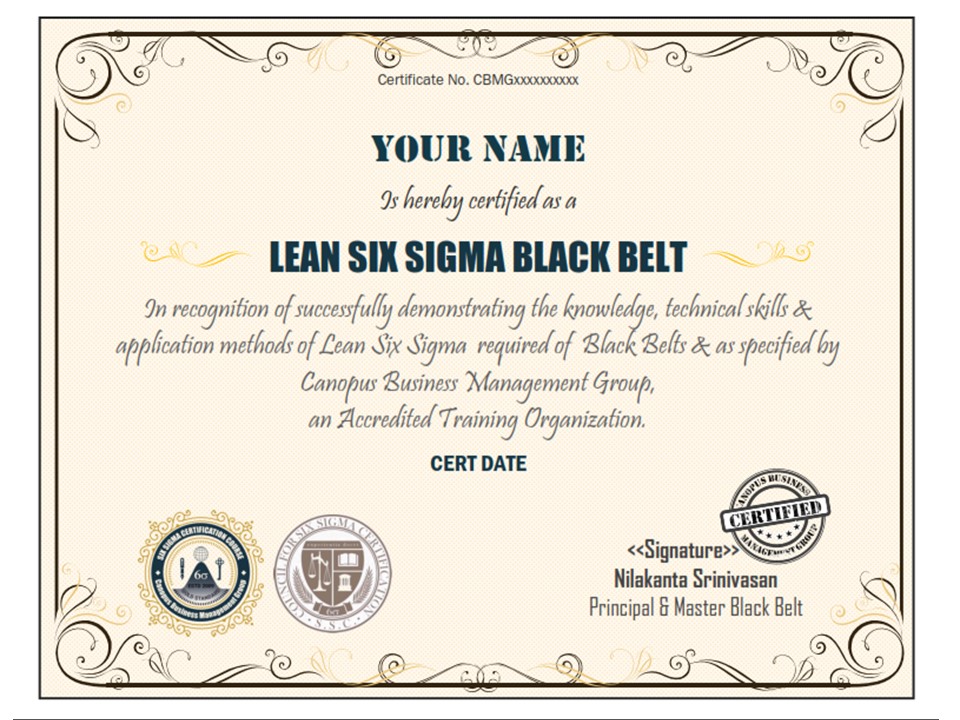

The skill sets reflect elements from Six Sigma, Lean and other process improvement methods like the theory of constraints and total productive maintenance. For each of these belts, level skill sets that describe which of the overall Lean Six Sigma tools are expected to be part at a certain belt level are available. Below the black belt are the green and yellow belts. The highest level of certification is a black belt, signifying a deep knowledge of Lean Six Sigma principles. The different levels of certifications are divided into belt colors. The five phases used in Lean Six Sigma aim to identify the root cause of inefficiencies and work with any process, product, or service that has a large amount of data or measurable characteristics available. Lean Six Sigma uses the Define, Measure, Analyze, Improve and Control ( DMAIC) phases similar to that of Six Sigma. Lean traditionally focuses on eliminating the eight kinds of waste (" muda"), and Six Sigma focuses on improving process output quality by identifying and removing the causes of defects (errors) and minimizing variability in (manufacturing and business) processes. Lean Six Sigma is a synergized managerial concept of Lean and Six Sigma. In the early 2000s Six Sigma principles expanded into other sectors of the economy, such as healthcare, finance, and supply chains.
#6 SIGMA BLACK BELT CERTIFICATION HOW TO#
It was developed as a guide for managers of manufacturing plants on how to combine lean manufacturing and Six Sigma to improve quality and cycle time in the plant. The first concept of Lean Six Sigma was created in Chuck Mills, Barbara Wheat, and Mike Carnell's 2001 book, Leaning into Six Sigma: The Path to Integration of Lean Enterprise and Six Sigma. While Lean Six Sigma developed as a specific process of Six Sigma, it also incorporates ideas from lean manufacturing, which was developed as a part of the Toyota Production System in the 1950s. A few years later, General Electric's Jack Welch consulted Bossidy and implemented Six Sigma at the conglomerate.ĭuring the 2000s, Lean Six Sigma forked from Six Sigma and became its own unique process. In the 1990s, Allied Signal hired Larry Bossidy and introduced Six Sigma in heavy manufacturing.

Six Sigma was developed within Motorola to compete with the kaizen (or lean manufacturing) business model in Japan. Lean Six Sigma's predecessor, Six Sigma, originated from the Motorola company in the United States in 1986. It combines Lean Management and Six Sigma to increase the velocity of value creation in business processes. Lean Six Sigma is a process improvement approach that uses a collaborative team effort to improve performance by systematically removing operational waste and reducing process variation.
#6 SIGMA BLACK BELT CERTIFICATION PLUS#
“Sigma” refers to standard deviations, or the variance of a set of data from its mean, and “six sigma” processes result in plus or minus three standard deviations (i.e. It is defined by the American Society for Quality (ASQ) as “a method that provides organizations tools to improve the capability of their business processes” by reducing variation in output and improving performance and profitability. Six Sigma is a process improvement methodology that is important for quality management across a wide range of industries.


 0 kommentar(er)
0 kommentar(er)
